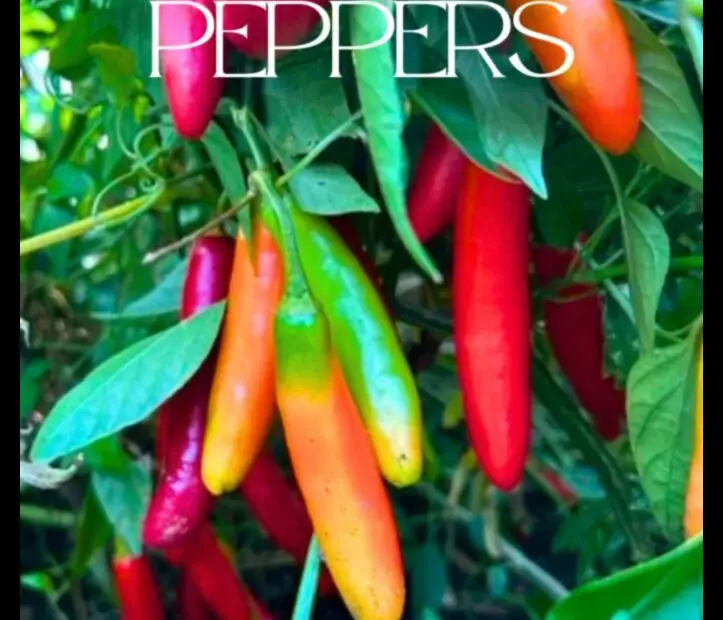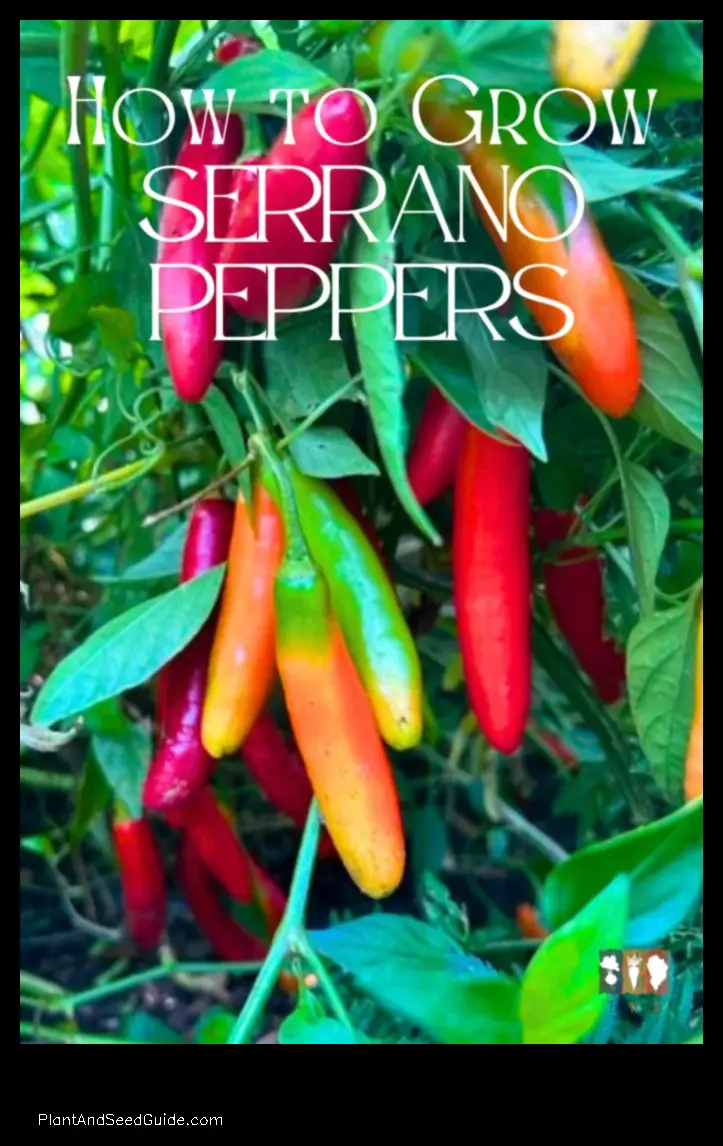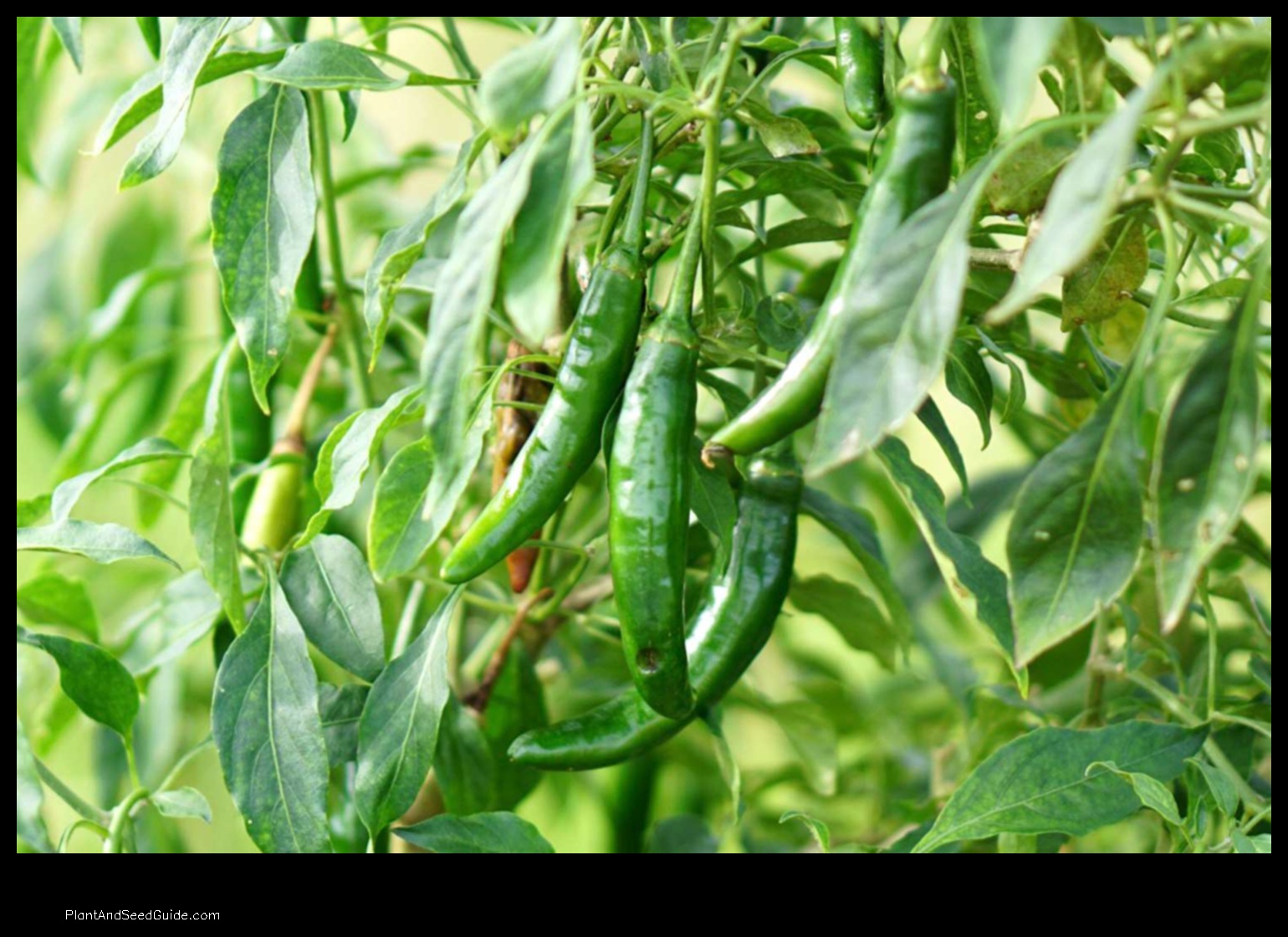

How to Plant Serrano Peppers
Serrano peppers are a type of hot pepper that is popular in Mexican cuisine. They are typically green in color, but can also be red or orange. Serrano peppers are about 2 inches long and have a Scoville heat rating of 10,000 to 23,000 SHU.
Serrano peppers are relatively easy to grow, but there are a few things you need to know in order to get the best results.

Growing Conditions
Serrano peppers need full sun and well-drained soil. The soil should be rich in organic matter and have a pH of 6.0 to 7.0.
Serrano peppers can be grown in containers or in the ground. If you are growing them in containers, make sure the container is at least 12 inches deep and has drainage holes.
Loading... Seconds Left for
Miniature Orchid Terrarium Gallery!

Serrano peppers are heat-loving plants and do best in temperatures between 70 and 85 degrees Fahrenheit. They can tolerate some frost, but will not produce well if the temperature drops below 50 degrees Fahrenheit.
Planting
Serrano peppers can be started from seed or from transplants. If you are starting from seed, sow the seeds about 1/2 inch deep in a seed starting mix. The seeds will germinate in about 7 to 10 days.
If you are using transplants, plant them about 18 inches apart in the garden. Water the plants well after planting.
![]()
ing="async" src="https://plantandseedguide.com/wp-content/uploads/2024/01/A-Step-by-Step-Guide-to-Planting-Serrano-Peppers-2.jpeg" alt="how to plant serrano peppers" style="width:600px;height:400px;">
Fertilization
Serrano peppers need regular fertilization to produce a good crop of peppers. Fertilize the plants every 2 weeks with a balanced fertilizer, such as 10-10-10.
Watering
Serrano peppers need to be watered regularly, especially during the hot summer months. Water the plants deeply so that the water reaches the roots.
Serrano peppers are susceptible to a number of pests and diseases, including aphids, mites, whiteflies, and thrips. They can also be affected by diseases such as leaf spot, powdery mildew, and verticillium wilt.
To prevent pests and diseases, it is important to practice good garden hygiene. This includes removing weeds, watering the plants at the base, and rotating crops. If you do see pests or diseases, you can treat them with organic pesticides or fungicides.
Harvesting
Serrano peppers are ready to harvest when they are fully ripe and have turned red or orange. To harvest the peppers, simply cut them off the stem with a sharp knife.
Storage">Storage
Serrano peppers can be stored in the refrigerator for up to 2 weeks. They can also be frozen for longer storage.
Cooking with Serrano Peppers
Serrano peppers are a versatile ingredient that can be used in a variety of dishes. They can be added to salsas, soups, stews, and curries. They can also be pickled or dried.
FAQ
Q: What is the best time to plant serrano peppers?
A: Serrano
peppers can be planted in the spring or summer.
Q: How do I prepare the soil for planting serrano peppers?
A: The soil should be well-drained and rich in organic matter.
Q: ="wpil_keyword_link" href="https://plantandseedguide.com/blog/how-much-is-a-yucca-plant-a-comprehensive-guide/" title="How much" data-wpil-keyword-link="linked">How much water do serrano peppers need?
A: Serrano peppers need to be watered regularly, especially during the hot summer months.
Q: What are some common pests and diseases that affect serrano peppers?
A: Some com
mon pests and diseases that affect serrano peppers include aphids, mites, whiteflies, and thrips. They can also be affected by diseases such as leaf spot, powdery mildew, and verticillium wilt.
Q: How do I harvest serrano peppers?
A: Serrano peppers are ready to harvest when they are fully ripe and have turned red or orange. To harvest the peppers, simply cut
<th>Topic
| Answer |
| Serrano pepper |
A serrano pepper is a hot chili pepper that is typically green in color, but can also be red or orange.It is a member of the Capsicum annuum species, and is closely related to the jalapeno pepper..
Serrano peppers are typically about 2-3 inches long and have a thin, smooth skin. They are very hot, with a Scoville heat unit rating of 10,000-25,000. |
| Growing serrano peppers |
Serrano peppers can be grown in a variety of climates, but they do best in warm, sunny weather. They can be grown in containers or in the ground. If you are growing them in containers, make sure the container is at least 12 inches deep and has drainage holes. If you are growing them in the ground, the soil should be well-drained and fertile. Serrano peppers need full sun to produce fruit. |
| Planting serrano peppers |
Serrano peppers can be started from seed or from transplants. If you are starting from seed, sow the seeds in a seed tray or pot filled with moist potting soil. Cover the seeds with a thin layer of soil and keep the soil moist. The seeds will germinate in about 2-3 weeks. If you are using transplants, plant them in the ground or in containers once the weather has warmed up and the danger of frost has passed. |
| Care for serrano peppers |
Serrano peppers need regular watering, especially during the hot summer months.They also need to be fertilized regularly..
You can use a balanced fertilizer, such as a 10-10-10 fertilizer, or a fertilizer specifically designed for peppers. Serrano peppers are susceptible to a variety of pests and diseases, such as aphids, mites, whiteflies, and powdery mildew. To prevent pests and diseases, you can spray the plants with a neem oil solution or insecticidal soap. |
| Harvesting serrano peppers |
Serrano peppers are ready to harvest when they are bright green and firm. To harvest the peppers, cut them off the stem with a sharp knife. Serrano peppers can be eaten fresh, pickled, or dried. |
IGrowing Conditions
Serrano peppers can be grown in a variety of climates, but they do best in warm, sunny weather. The ideal temperature range for growing serrano peppers is between 70 and 85 degrees Fahrenheit. Serrano peppers can tolerate some frost, but they will not produce well if the temperature drops below 50 degrees Fahrenheit.
Serrano peppers need full sun to produce well. They can be grown in containers or in the ground. If you are growing serrano peppers in containers, make sure the container is at least 12 inches deep and has good drainage.
Serrano peppers grow best in soil that is rich in organic matter and has a pH of between 6.0 and 7.0. If you are not sure about the pH of your soil, you can test it with a soil pH test kit.
Serrano pep
pers are heavy feeders and need to be fertilized regularly.
The best fertilizer for serrano peppers is a balanced fertilizer that contains nitrogen, phosphorus, and potassium..
You can fertilize serrano peppers every two weeks with a water-soluble fertilizer or once a month with a slow-release fertilizer.
Planting
Serrano peppers can be grown from seed or from seedlings. If you are starting from seed, you will need to start them indoors about 6-8 weeks before the last frost date in your area. Serrano pepper seeds can take up to 2 weeks to germinate, so be patient! Once the seedlings have sprouted, you can transplant them outdoors once the weather has warmed up and the risk of frost has passed.
If you are starting with seedlings, you can transplant them outdoors once they are about 6 inches tall and have developed a few true leaves. Space the seedlings about 18 inches apart.
Serrano pep
pers prefer full sun and well-drained soil. The soil should be rich in organic matter and have a pH of 6.0-7.0.
Water the plants regularly, especially during dry periods. Fertilize the plants monthly with a balanced fertilizer.
Serrano peppers can be harvested when they are fully ripe. The peppers will turn a bright red color when they are ripe. To harvest the peppers, simply cut them off the stem.
ization">Fertilization
Serrano peppers are heavy feeders and require regular fertilization to produce a bountiful harvest.
The best time to fertilize serrano peppers is once a month, starting when the plants are about 6 inches tall..
You can use a balanced fertilizer, such as 10-10-10, or a fertilizer specifically formulated for peppers.
When fertilizing serrano peppers, it is important to follow the directions on the fertilizer label carefully. Too much fertilizer can damage the plants, so it is better to err on the side of caution.
In addition to fertilizer, serrano peppers also benefit from regular applications of compost or manure. Compost and manure provide the plants with essential nutrients, such as nitrogen, phosphorus, and potassium, as well as organic matter, which helps to improve the soil structure and drainage.
By followin
g these fertilization tips, you can help your serrano peppers to grow strong and produce a bountiful harvest.
Watering
Serrano peppers need regular watering, but they should not be overwatered. The best way to water serrano peppers is to water them deeply once or twice a week, making sure to soak the soil thoroughly.
It is important to avoid watering serrano peppers too often, as this can lead to root rot. If you are not sure whether or not your serrano peppers need water, check the soil. If the soil is dry to the touch, it is time to water the plants.
Serrano pep
pers can also be watered with a drip irrigation system. This is a good option if you are going to be away from home for a long period of time, as it will help to keep the plants watered even if you are not there to do it yourself.
If you are growing serrano peppers in containers, it is important to make sure that the pots have drainage holes. This will help to prevent the roots from becoming waterlogged.
VPests and Diseases
Serrano peppers are susceptible to a variety of pests and diseases, including aphids, mites, whiteflies, thrips, leaf spot, and powdery mildew.
Aphids are
small, soft-bodied insects that feed on the sap of plants. They can cause leaves to wilt and distort, and they can also transmit diseases. To control aphids, you can use insecticidal soap, neem oil, or horticultural oil.
Mites are tiny, eight-legged creatures that feed on the sap of plants. They can cause leaves to turn yellow and drop, and they can also transmit diseases. To control mites, you can use insecticidal soap, neem oil, or horticultural oil.
Whiteflies are small, flying insects that feed on the sap of plants. They can cause leaves to turn yellow and drop, and they can also transmit diseases. To control whiteflies, you can use insecticidal soap, neem oil, or horticultural oil.
Thrips are
small, slender insects that feed on the leaves of plants. They can cause leaves to become discolored and distorted, and they can also transmit diseases. To control thrips, you can use insecticidal soap, neem oil, or horticultural oil.
Leaf spot is a fungal disease that causes lesions on the leaves of plants. The lesions can be brown, black, or gray, and they can eventually cause the leaves to fall off. To control leaf spot, you can use a fungicide that is specifically labeled for use on peppers.
Powdery mildew is a fungal disease that causes a white, powdery growth on the leaves of plants.
The growth can eventually cover the entire leaf, and it can eventually cause the leaves to fall off..
To control powdery mildew, you can use a fungicide that is specifically labeled for use on peppers.
If you are
experiencing problems with pests or diseases on your serrano peppers, it is important to contact your local extension office for assistance. They can help you identify the problem and recommend the best course of action for treatment.
Harvesting
Serrano peppers are ready to harvest when they are fully ripe and have turned a bright red color. The peppers should be firm and have a glossy appearance. To harvest the peppers, simply cut them off the stem with a sharp knife.
Serrano peppers can be eaten fresh, pickled, or dried. They are a versatile pepper that can be used in a variety of dishes.
ear:both; margin-top:0em; margin-bottom:1em;">See also
How to Measure a Pot for a Plant A Step-by-Step Guide



